Prostatitis is inflammation of the prostate gland.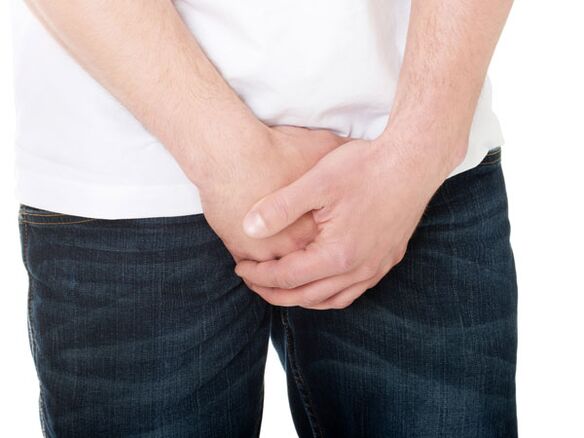 It happens more often in men aged 25-50 and older.Pain and false urination, as well as the general feeling of the disease, are the main symptoms.Often the disease is associated with fever and chills.
It happens more often in men aged 25-50 and older.Pain and false urination, as well as the general feeling of the disease, are the main symptoms.Often the disease is associated with fever and chills.
Depending on the cause of the occurrence, the bacterial and abacterial form of the disease is released.Abacterial prostatitis with a 90% portion is the most common inflammation of the prostate.According to estimates, about 50% of all men face this problem, at least once in one life.
The main reasons for development:
- E. coli;
- sexually transmitted infections, including gonorrhea, chlamydia;
- nervous system disorder;
- Reducing the body's protective functions.
Apparently, the risk of developing the disease increases with chronic body intoxication with alcohol, morphine and nicotine.Studies conducted in the field of modern andrology argue that among the predisposing factors there are twist injuries, for example, cyclists and motorcyclists.The listed circumstances contribute to the irritation of latent inflammation in the organ tissues.
The crucial importance in the development of pathology has been assigned to the phenomena stretched in the tissue.In the event of a violation of capillary blood flow, swelling and exudation of tissues occur, which is fraught with the creation of acceptable conditions for the emergence of an infectious process.
The structure and functions of the prostate gland
The prostate is the male genitalia, which is located below the bladder.The elongated gland, the size of a chestnut weighs 20 grams and surrounds the urethra and the two shed channels.They direct the secret of the testicles, supplements and seeds of the seeds to the urethra during shed.
The elongated gland produces the so -called secret, which is also part of the seed juice (ejaculate).She stands in the urethra when trying to sperm and supports her transport.About 70% of ejaculated fluid during orgasm is produced by a prostate.Liquid is an alkaline secretion that mixes and also protects the sperm from the vaginal acid medium, increases their mobility and facilitates their flow into the egg.Due to the anatomical location of the prostate, the disease often causes symptoms such as painful urination.
Types of prostate
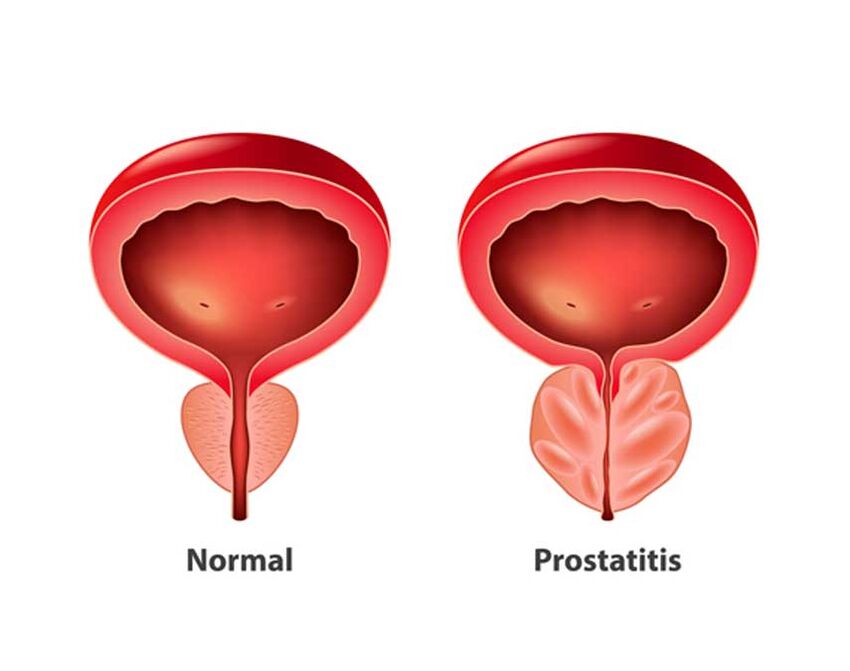
With a bacterial prostate lesion, two forms of current are distinguished:
- Sharp inflammation is caused by bacteria that rise through the urethra and colonize the prostate.These are Escherichia coli bacteria that live in the gut.Other pathogens include enterobacteria and mycobacteria.Inflammation provoked by bacteria is about 10% of cases.
- Chronic.A non -secured bacterial infection can develop into a chronic.This is the case where complaints last more than 3 months.
Chronic prostatitis is mainly diagnosed in the elderly.In the absence of timely therapy, infertility develops in approximately 40% of cases.This is due to the fact that the body no longer develops a enough secret amount, which ensures sperm mobility.
Table - Types and Symptoms of Prostatitis In Men
| NAME | feature | Symptoms |
| Abacterial | The base of the emptying is based.Urine enters the canals, as a result of which metabolic products (uric acid, purine and pyrimidine bases) are deposited in its tissues, which leads to inflammation and stone formation. |
|
| Sister -in -law | Inflammation is located in separate fractions of the gland, which leads to a change in the structure of the submucosal layer and the mucosa of the inlet ducts.In the follicles, stagnant phenomena arise, which is filled with further progression of the disease. |
|
| Of being cycled | It is associated with moderate hyperthermia or typical subfebrile.Focal suppression of all damaged areas occurs. |
|
| Parenchymal | Numerous lesions are present.Most of the parenchyma, interstitial tissue are included in the pathological process.With the accumulation of multiple abscesses, an abscess is formed. |
|
Inflammation can also occur without symptoms.It is found within the framework of a preventive examination in the content of an added number of leukocytes in semen.
The characteristics of the current
Prostatitis has several stages of development, each of which is characterized by certain symptoms:
- Phase I. is characterized by the appearance of the inflammatory process and the expanded functioning of the prostate.The general condition remains normal, with the exception of the appearance of the clinical figure of the disease.The first stage lasts 1-3 years.At this stage, a full cure is possible with the help of medicines.
- Phase II.Symptoms come down.After some time, there is a violation of elevation and nervousness.In sexual intercourse, there can be no spill.There is weakness and pain in the perineum.It is associated with a violation of the structure of the organ, which is fraught with damaged blood supply.Therapy is performed using antibiotics, immunomodulators and physiotherapy.
- Phase III.The last stage in the development of the disease, which is associated with tissue necrosis.Scars appear on it, which begin to crush on the internal organs.Iron is wrinkled and deformed, which is filled with genitourinary system dysfunctions.There is acute pain during urination and the signs of radiculitis have improved.The patient should be under constant medical control.
In advanced cases, the disease is completely removed.Therefore, do not start illness.It is best to consult a doctor when the first symptoms appear, which can be adjusted in medication.
Symptoms of prostatitis
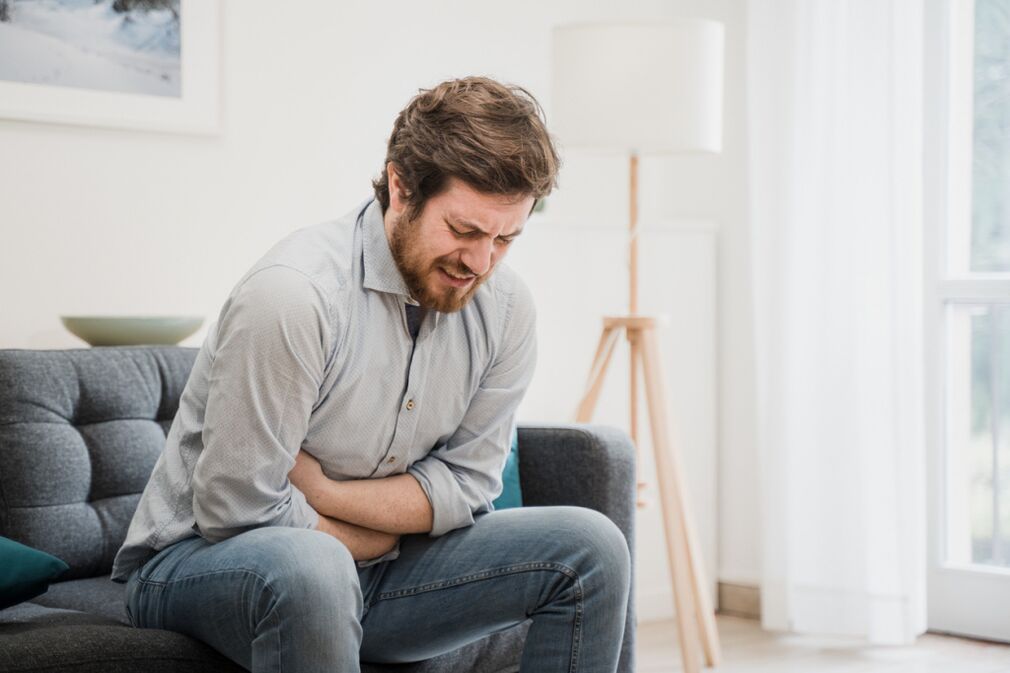
Manifestations are the same for all types of disease, with the exception of fever, which is present only of bacterial origin.Signs of prostatitis are conditionally divided into 2 groups:
- From the uric vegetable apparatus - painful and frequent urination, lower abdominal pain, a feeling of incomplete emptying;
- On the part of sexual function - loss of orgasm, premature spill, poor lift, pain in the rectum.
There is also an increase in the nervousness and anxiety caused by the focus of attention in its condition.This can be associated with a change in character, anger and irritability.
Potential complications
Lack of diagnosis and timely treatment leads to the following complications:
- Urine delay.The patient is unable to empty the bladder independently, which is associated with severe pain.There are cases of gap.To avoid complications, urine is excreted through a catheter.
- The well abscess accumulates, which is associated with high body temperature, chills and severe pain in the perineum.Antibiotics with a high dose and surgical intervention are needed.
- Blood infection (urosepsis).Bacteria penetrate the bloodstream and spread throughout the body.
If the disease persists chronically and without adequate medication correction, a person can become fruitless.Only effective therapy helps to get rid of such complications.
Diagnosis
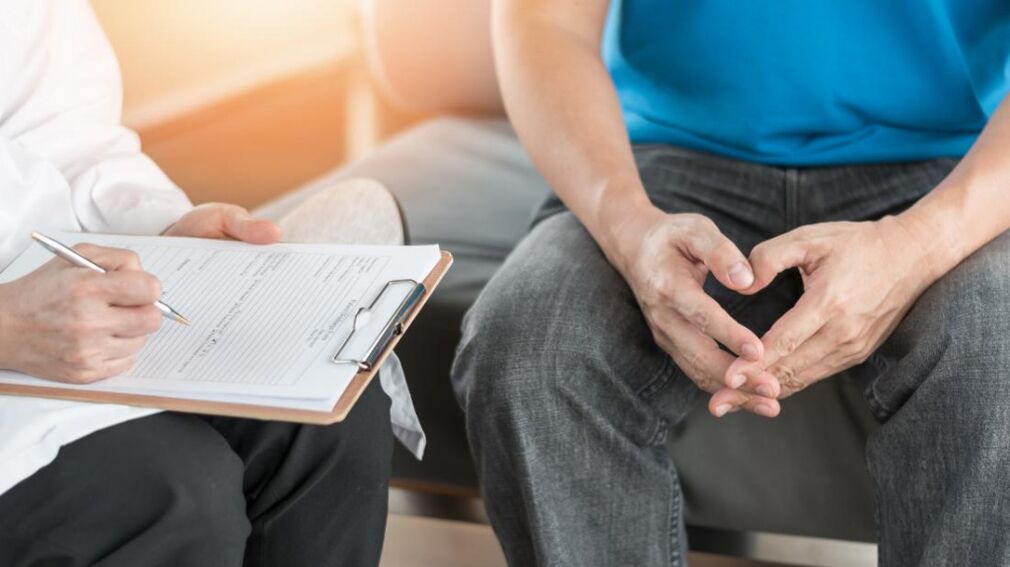
If the first signs and symptoms of the prostatitis appear, you should consult a doctor who will make a diagnosis and prescribe a suitable scheme of therapy.
Key stages of diagnosis:
- history of anamnesis (symptom studies);
- palpation of inguinal lymph nodes;
- Urethra stains;
- Transectal ultrasound;
- Laboratory blood test;
- A sample of sperm and urine samples to identify the potential type of pathogenic microorganisms.
Based on the results obtained, the therapy is determined.In advanced cases, surgical intervention cannot do without.Among the main indications for surgical intervention, an abscess, paraprotitis and an acute delay in the urine should be distinguished.
Treatment of prostatitis
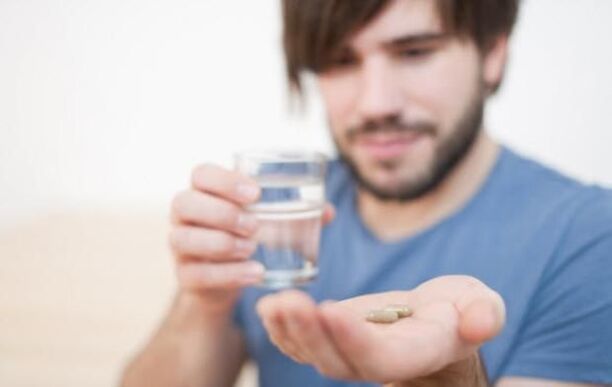
The conservative therapy scheme is described only after determining the pathogen.Self -medication in this case is unacceptable because it can lead to irreversible health consequences.
The most effective medication for prostatitis:
- Nr.1 - Extract of dragged palm fruit.
The phytoprepa is described for the prostate lesion.Designed based on the extract of freedom fruits.It does not cause hormonal imbalance and does not affect the hypothamic system of the pituitary gland.
- Nr.2 - Sodium aminodidihroftalazindion.
The anti-inflammatory, immunomodulatory drug regulates the functional-metabolic activity of the cellular structures of adaptive and congenital immunity.The suppositories are prescribed in complex therapy for adults and children from 12 and older.Effectively faces the manifestations of the inflammatory process, reducing the symptoms of the disease.
- Nr.3 - prostate.
The drug is widely used in urological diseases.This is the most effective treatment for chronic prostatitis.Moderately reduces the size of the prostate gland, improving urine processes.Available in the form of rectum tablets and suppositories.
- Nr.4 - Transfer Prostate Form of suppositories and intramuscular injections.
Designed to stop prostate signs and treatment of disease in men.The animal's origin medicine facilitates swelling of the gland, restores secretory functions, stimulating muscle tone.
- Nr.5 - nitrofurantine.
Antibacterial tablets have an antimicrobial effect.It quickly eliminates inflammation, eliminating genitourinary infections.
- Nr.6 - tsiprofloxacin.
Belongs to the group of fluoroquinolons.Effectively faces complex and uncomplicated forms of the disease.Helps to eliminate existing violations.
- Nr.7 - bromide nitrogen.
Immunostimulating agent based on azoximer bromine.It relieves inflammation and has an antioxidant and detoxifying effect.Increases the body's resistance to different types of infections.Available in the form of an injection solution.
- Nr.8 –cephym.
It has a wide spectrum of action, preventing the cell membrane of the pathogen.Contains character.Used in complex therapy.
- No. 9– Josamycin.
A macroline antibiotic based on Josamycin Propionate.It has a bacteriostatic effect by inhibiting the synthesis of protein bacteria.It is produced in the form of grains for the preparation of a suspension and tablets.
- Nr.10 - Doxycycline.
The macrolid group antibiotic has high activity in relation to intercellular microorganisms.Is described for mixed infections of the genitals and urinary tract.
To increase the effectiveness of the medication, the massage of the glands is indicated.The procedure has a comprehensive action - squeeze the secret accumulated in the ducts to remove from the body.
Preventing prostate

To exclude the development of the disease, it is recommended to avoid hypothermia, observe a diet and lead regular sex life.It is also important to exclude sexually transmitted diseases.
A favorable prediction depends on several factors:
- timely diagnosis;
- Cause factor;
- the form of the disease;
- age;
- The general condition of the patient.
With timely detection and adequate treatment, the prognosis is always positive.Otherwise, consequences such as chronic inflammation and other complications may occur.You should visit the urologist at least once a year.With the return of the prostate, preventive visits to the doctor are recommended every 6 months.

























